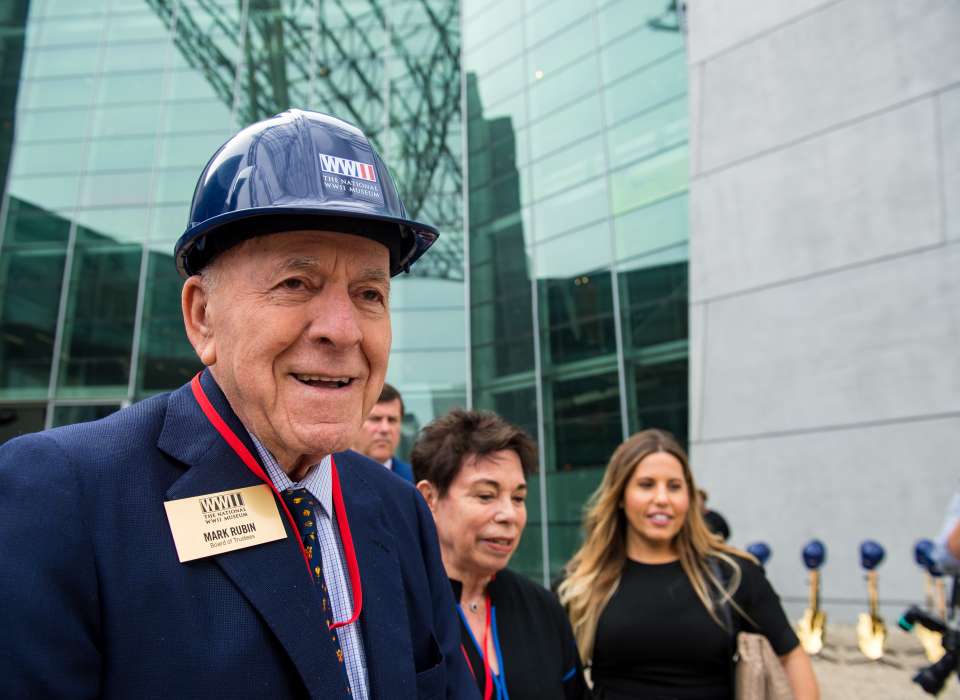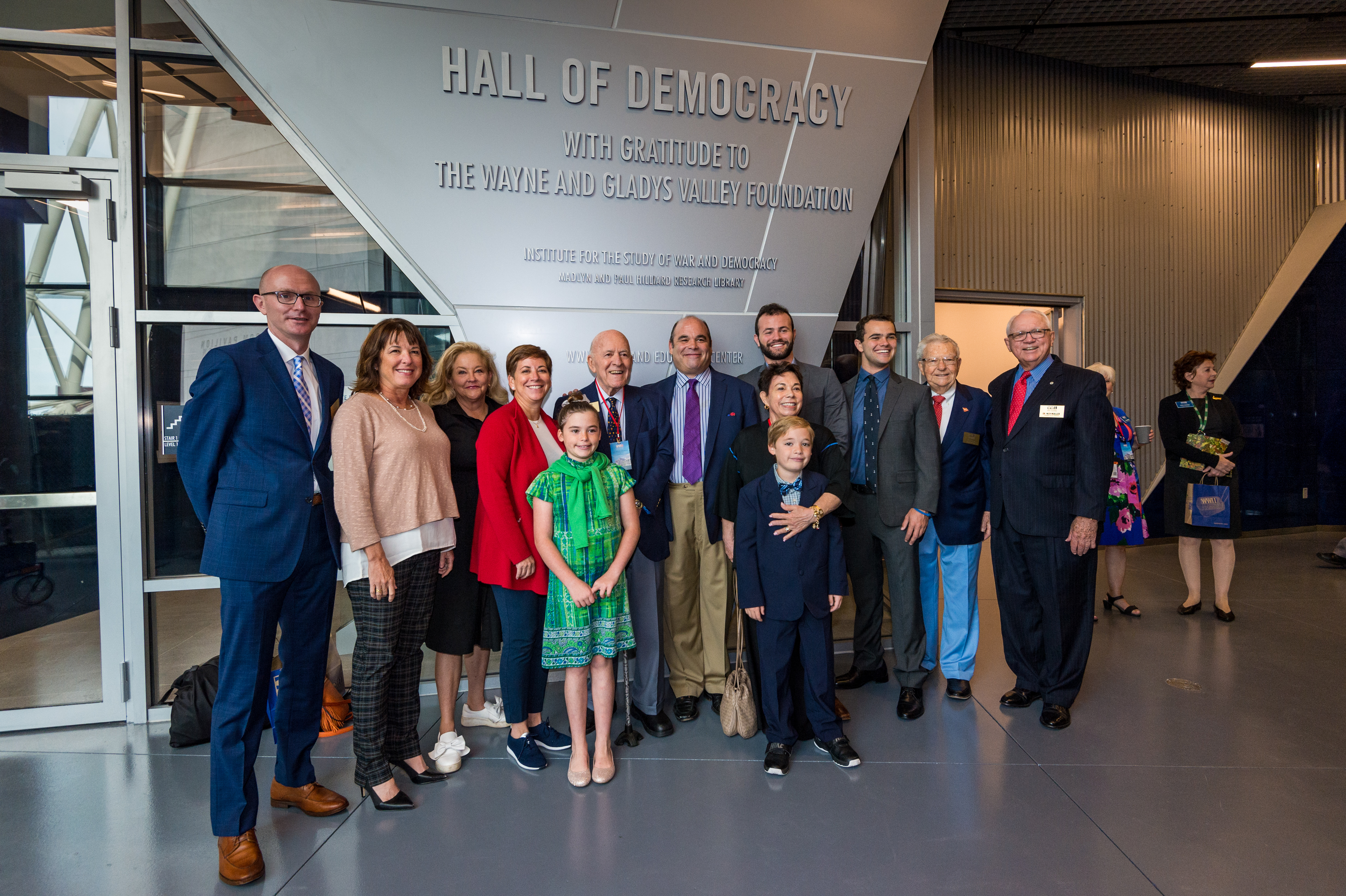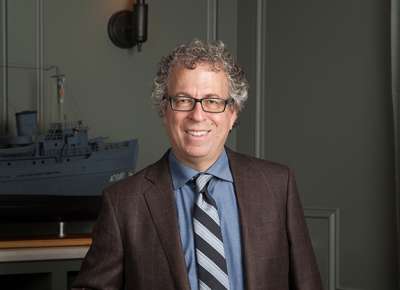Top Image: Rubin at Liberation Pavilion Groundbreaking Ceremony, courtesy of The National WWII Museum.
The National WWII Museum mourns the passing of Mark Rubin, a Holocaust survivor and longtime Museum Trustee who was personally committed to ensuring future generations would never forget the lessons of the Holocaust and World War II. Mark joined the Museum’s Board of Trustees in 2013 and was most proud of his involvement in the development of the Liberation Pavilion, the Museum’s capstone exhibit hall now under construction. He and his wife, Pam, generously named the pavilion’s first-floor Liberation Theater, which serve as a permanent tribute to his remarkable life while sharing the stories of both Holocaust survivors and camp liberators with Museum visitors.
Mark passed away on February 13, 2021, at age 84, but his legacy as a respected businessman, community leader, and dear friend will continue to be an inspiration to all of us. Samuel Zemurray Stone Senior Historian Rob Citino had the honor of interviewing Rubin in 2018 to collect his firsthand accounts of the Holocaust for the Museum’s collection. Below is Citino’s personal tribute to Mark Rubin, and you can also view their interview by clicking here https://youtu.be/NiCn62N02Xo.
When I heard the news of the passing of Mark Rubin—Holocaust survivor, successful real estate developer, and dear friend and Trustee of The National World War II Museum—I immediately thought back to May 2018, when I visited him and his wife Pam at their home in Beverly Hills, California.
I was there to do an interview. The Museum wanted Mark’s story—his “oral history,” as we call them here—on video. I knew Mark was a Holocaust survivor, and the story he had to tell me was hair-raising. Born in January 1937 in the small town of Sabinov in then-Czechoslovakia, Mark’s youth was stamped by the horrific experience of the Holocaust. He spent much of his childhood on the run from the Gestapo or in hiding until the family was betrayed, turned in to the authorities by the daughter of the family who was hiding them. “We were like bounty, my mother, brother, and me,” he once stated. At the age of 7, Mark was shipped to the Terezin (Theresienstadt) concentration camp. The brutal four-day trip to the camp by cattle car became an indelible memory to him. “You grow up very quickly,” he said of that time. I could see him shudder as he relayed the awful details.
As the interview proceeded, I found myself increasingly interested, not just in his story, but in the man himself. Mark was a big guy, but a gentle one. He spoke in a kind of clipped cadence, but very softly, so that as the hour went by, I found myself leaning in, trying to get closer to him, afraid that I would miss something, some crucial detail of the story.
And some of his narrative was just astonishing. He had a vivid memory of the day the Germans evacuated Terezin just ahead of the advancing Soviet troops, for example. He and his brother watched from the embankment of the camp as the Germans departed, and in fact, some of the retreating soldiers turned round and began firing back into the camp. He and his brother came through the ordeal unharmed, but even seven decades later, Mark would remember vividly how his mother gave him a spanking for risking his life.
The thought of a little boy symbolically thumbing his nose at the Wehrmacht in retreat appealed to me, and so did what happened after the war. Mark’s father actually identified and turned in the Gestapo agent who had had them arrested, which had to have been a satisfying moment for the entire Rubin clan. His dad also made sure to attend the trial. And the execution.
By this point, I was completely hooked. Mark might as well have been ten feet tall in my mind, and I felt as if I had known him forever.
After liberation, political instability and continued anti-Semitism in Czechoslovakia led the family to emigrate to the United States in March 1948, when Mark was 11. He arrived in California in 1953 after five years of schooling in New York City and working as a messenger in Manhattan. He started working as a laborer on construction sites in California, his entry point into the world of real estate and property development.
One of The National WWII Museum’s earliest and strongest supporters, Mark joined our Board of Trustees in 2013, the only Holocaust survivor to serve. The project that was nearest to his heart was the Liberation Pavilion, the Museum’s final permanent exhibit, currently under construction and slated to open in 2022. Indeed, an extremely generous gift from Mark and his wife, Pam, will support the “Liberation Theater,” featuring a film that will present the moment of the liberation of the camps from dual perspectives: that of the liberated prisoners, as well as the soldier-liberators who gave them their freedom.
Rubin family at the Grand Opening of Hall of Democracy and Groundbreaking of Liberation Pavilion in 2019, courtesy of The National WWII Museum
Since that day back in 2018, I have to come to learn that the Rubins’ generosity with the Museum is of a piece with their long history of philanthropy, community service, and support for cultural and educational institutions. Service to others is their calling card, and he and Pam spread the generosity far and wide: the American Jewish University, the Los Angeles Jewish Home Foundation, the Riverside Chamber of Commerce, Cedars-Sinai Medical Center Mt. St. Mary’s University, La Sierra University, University of California, Riverside, to name a few.
I’ll never forget one moment about that 2018 interview, when I asked Mark—a Holocaust survivor, whose childhood was marked by some of the most horrible events you could possibly imagine—to sum up his life. He thought a moment, looked me in the eye, and said simply: “How lucky I am!”
The National WWII Museum is equally fortunate to have had him as a friend, advisor, and benefactor, and I personally, feel blessed to have known him.
Goodbye, my friend. The world is a poorer place without you in it.
--Rob Citino
Robert Citino, PhD
Robert Citino, PhD, is the former Samuel Zemurray Stone Senior Historian in the Jenny Craig Institute for the Study of War and Democracy.


